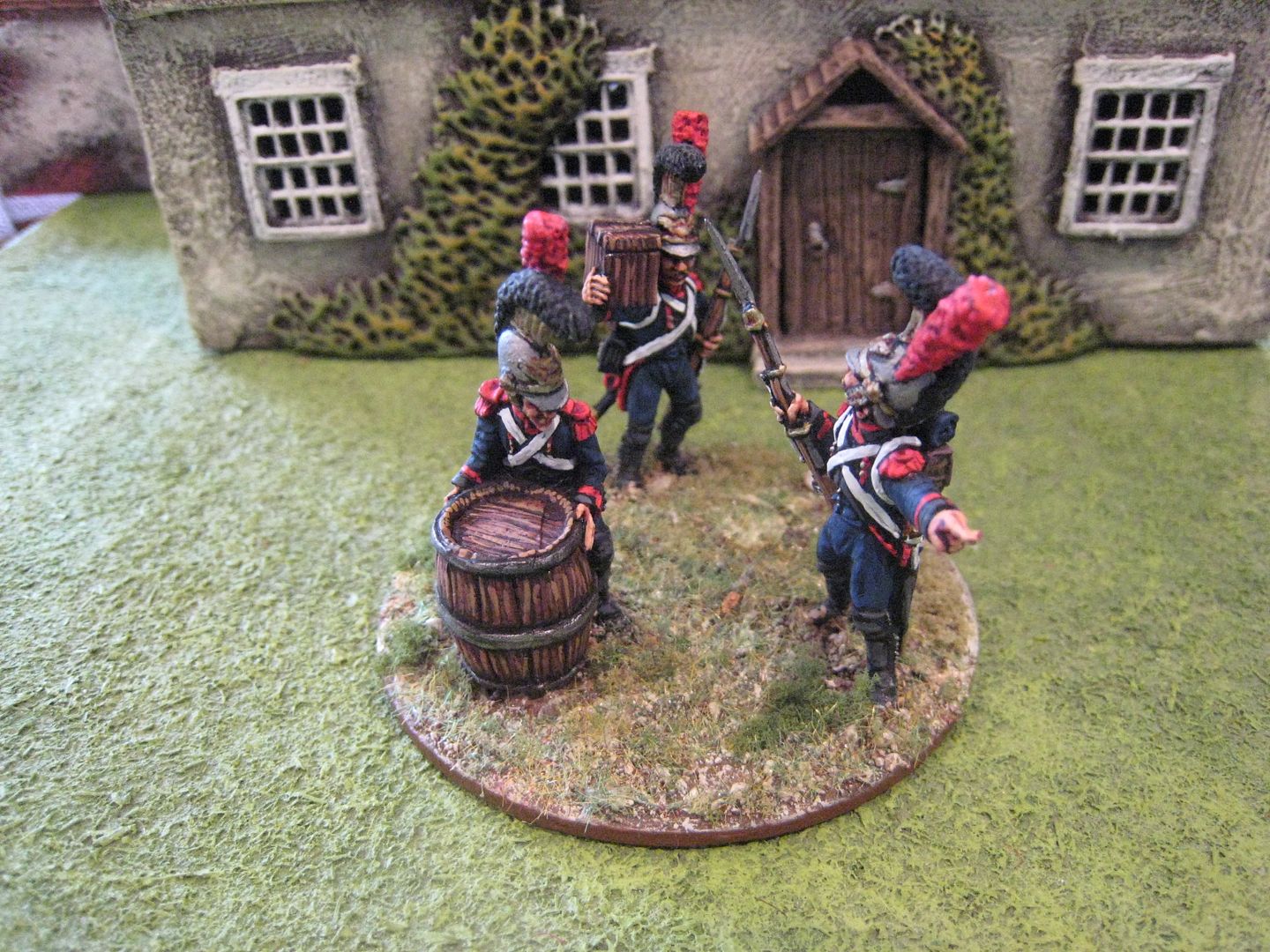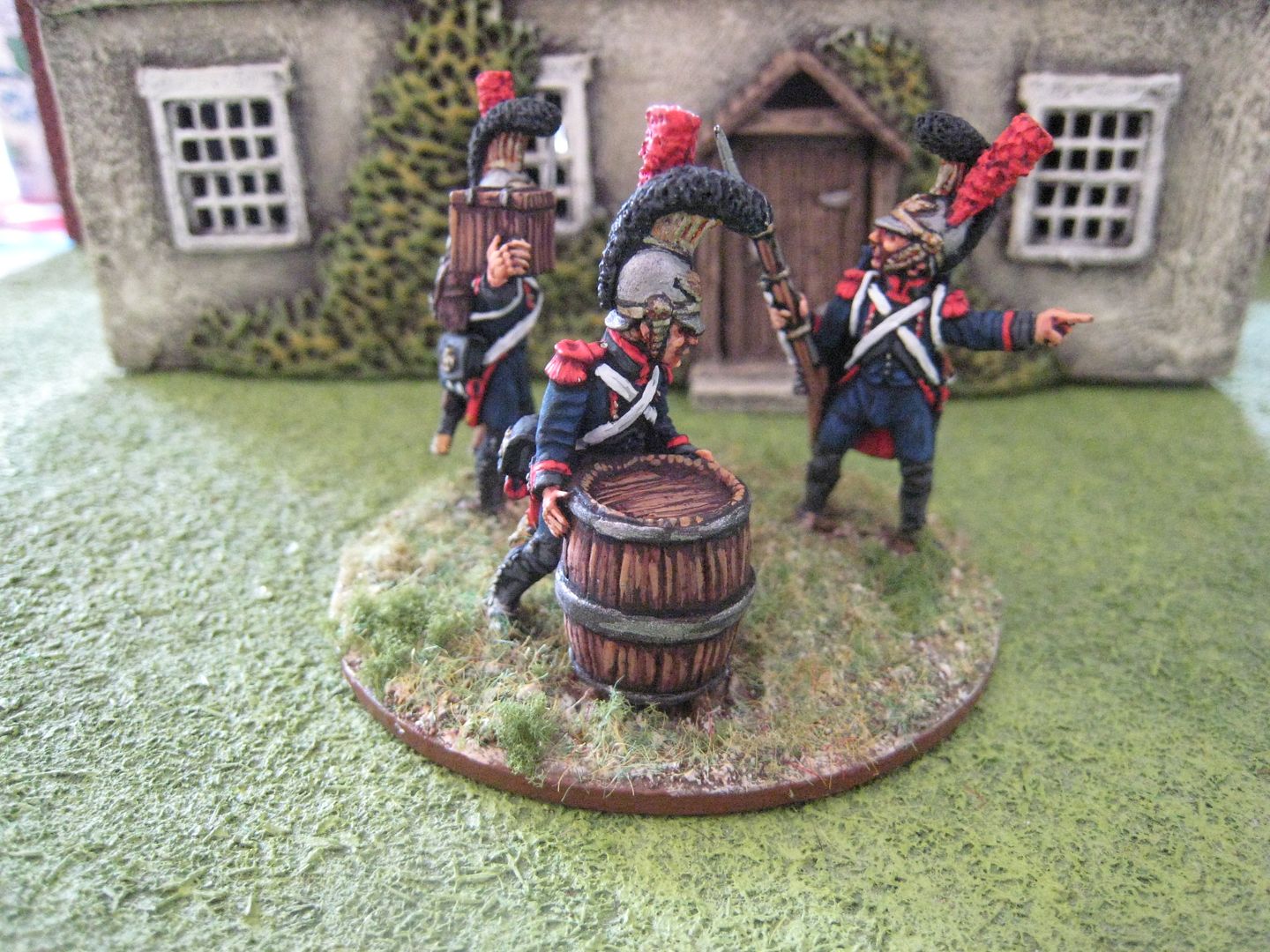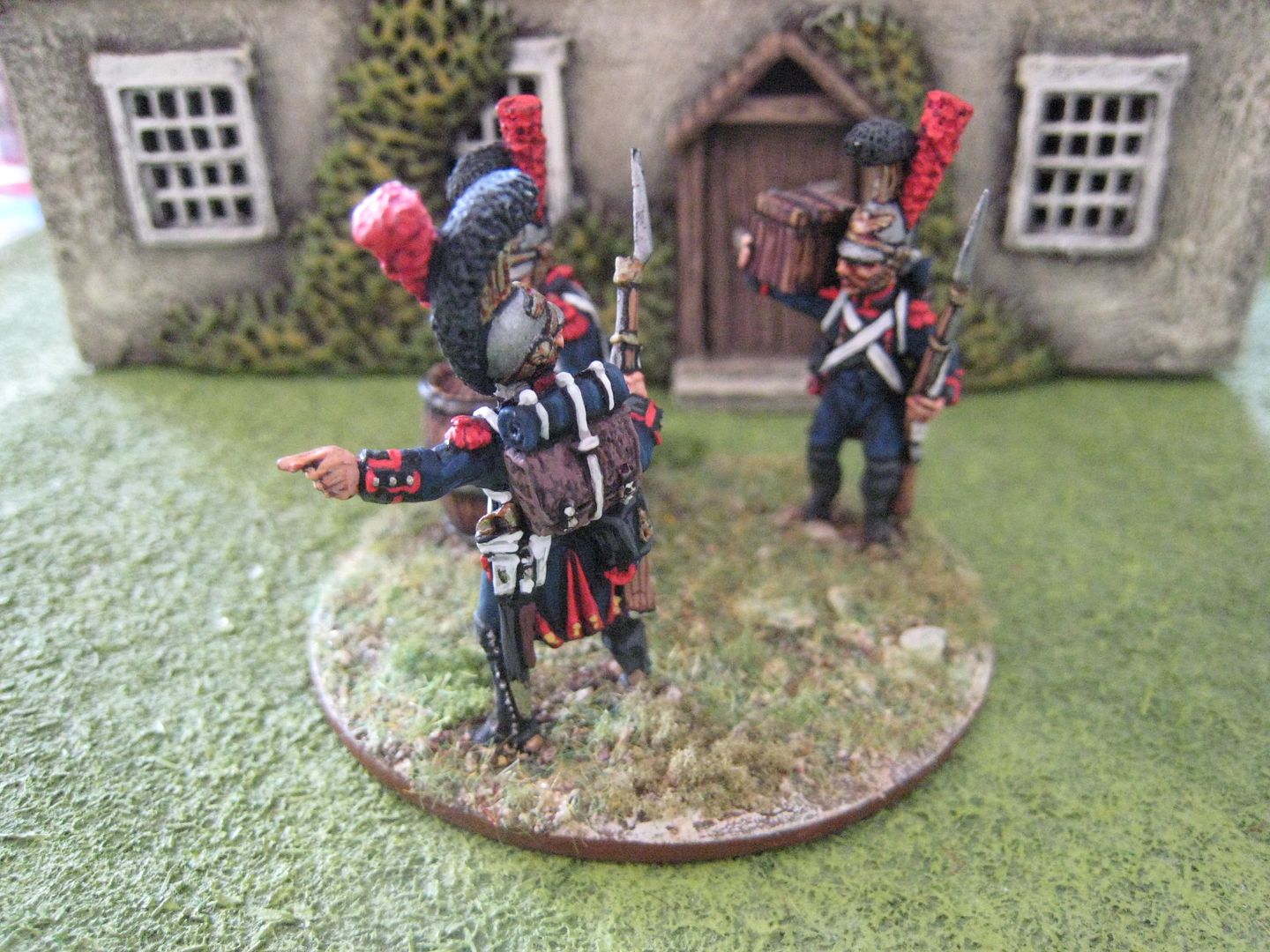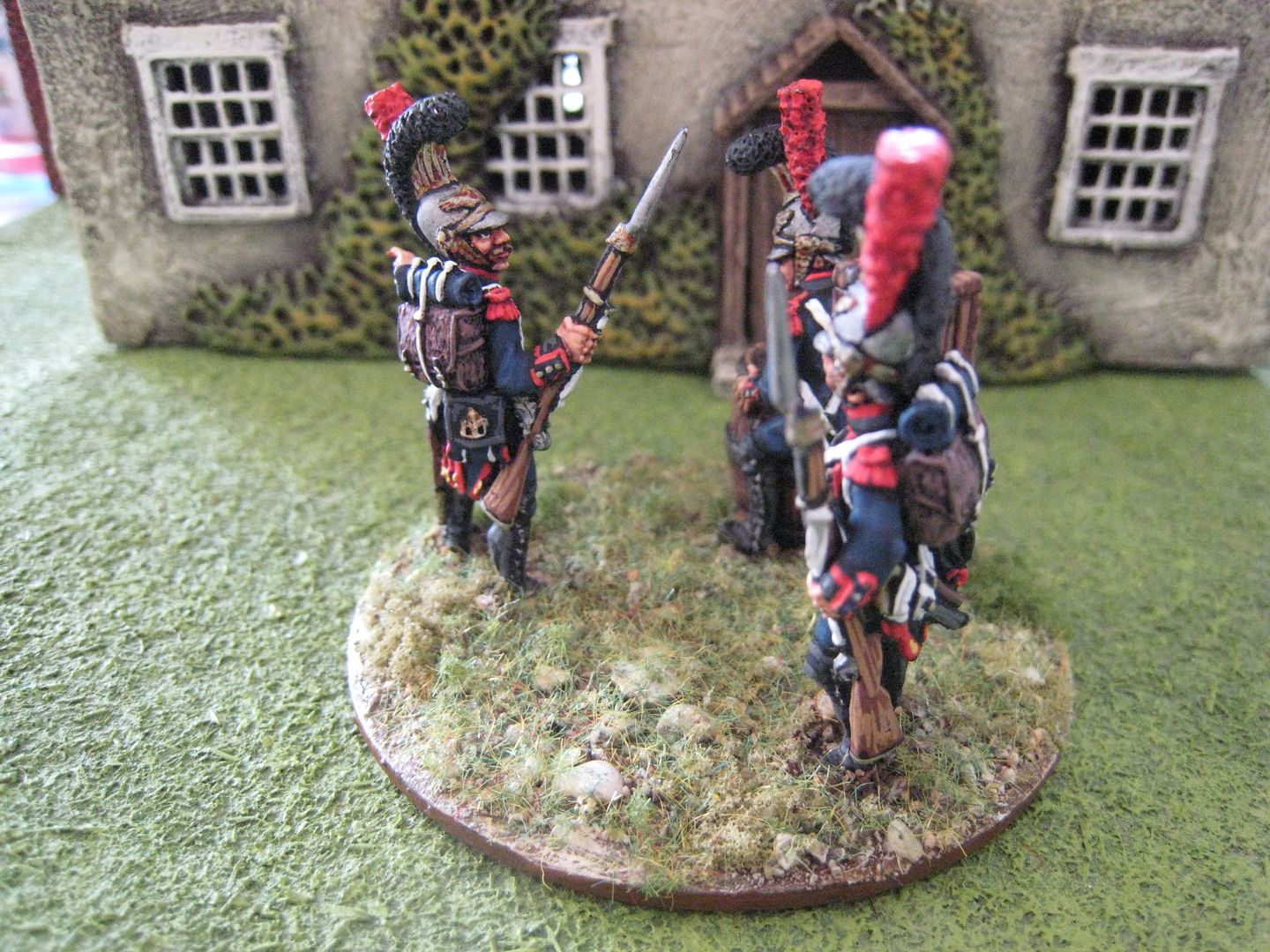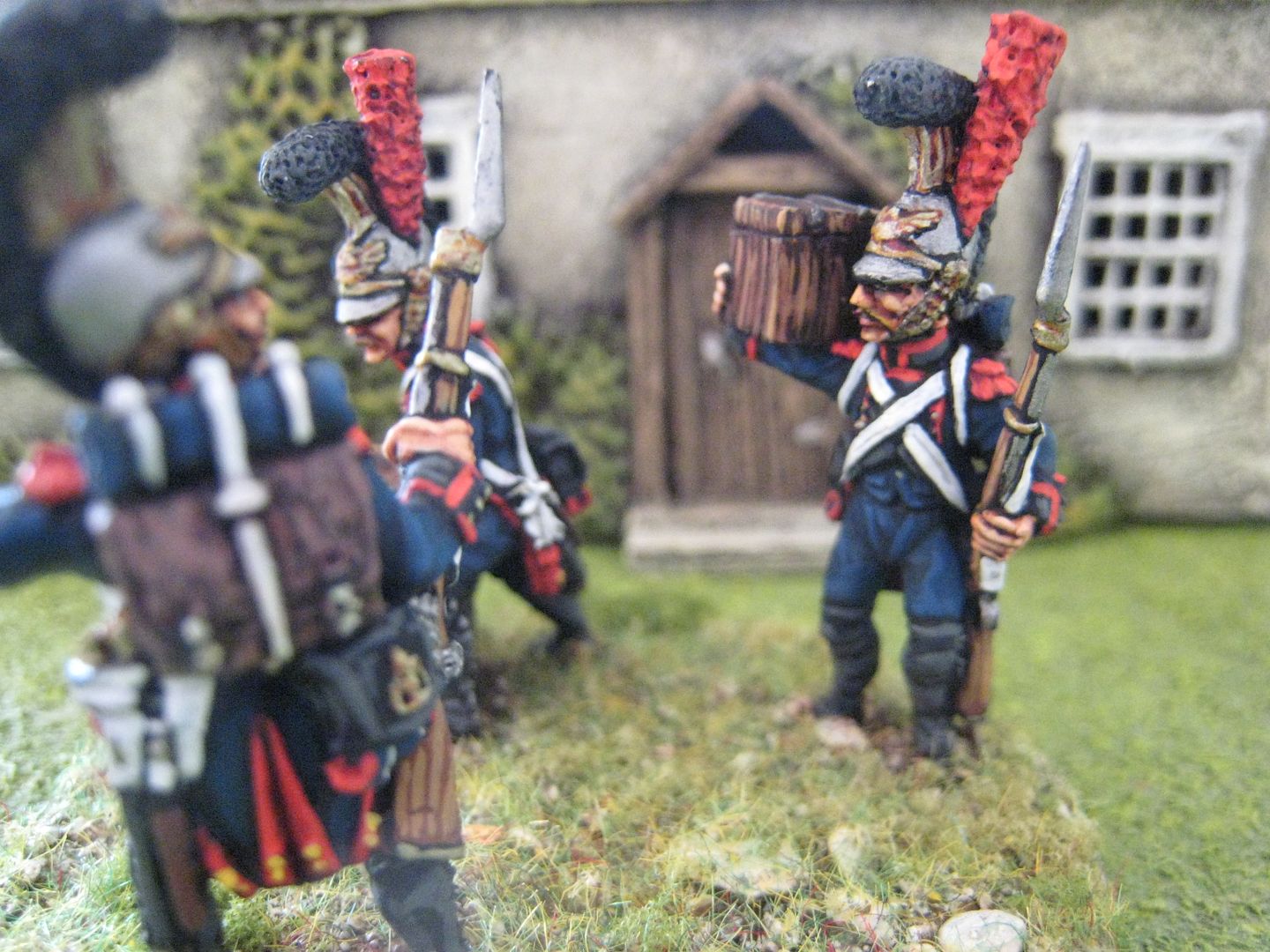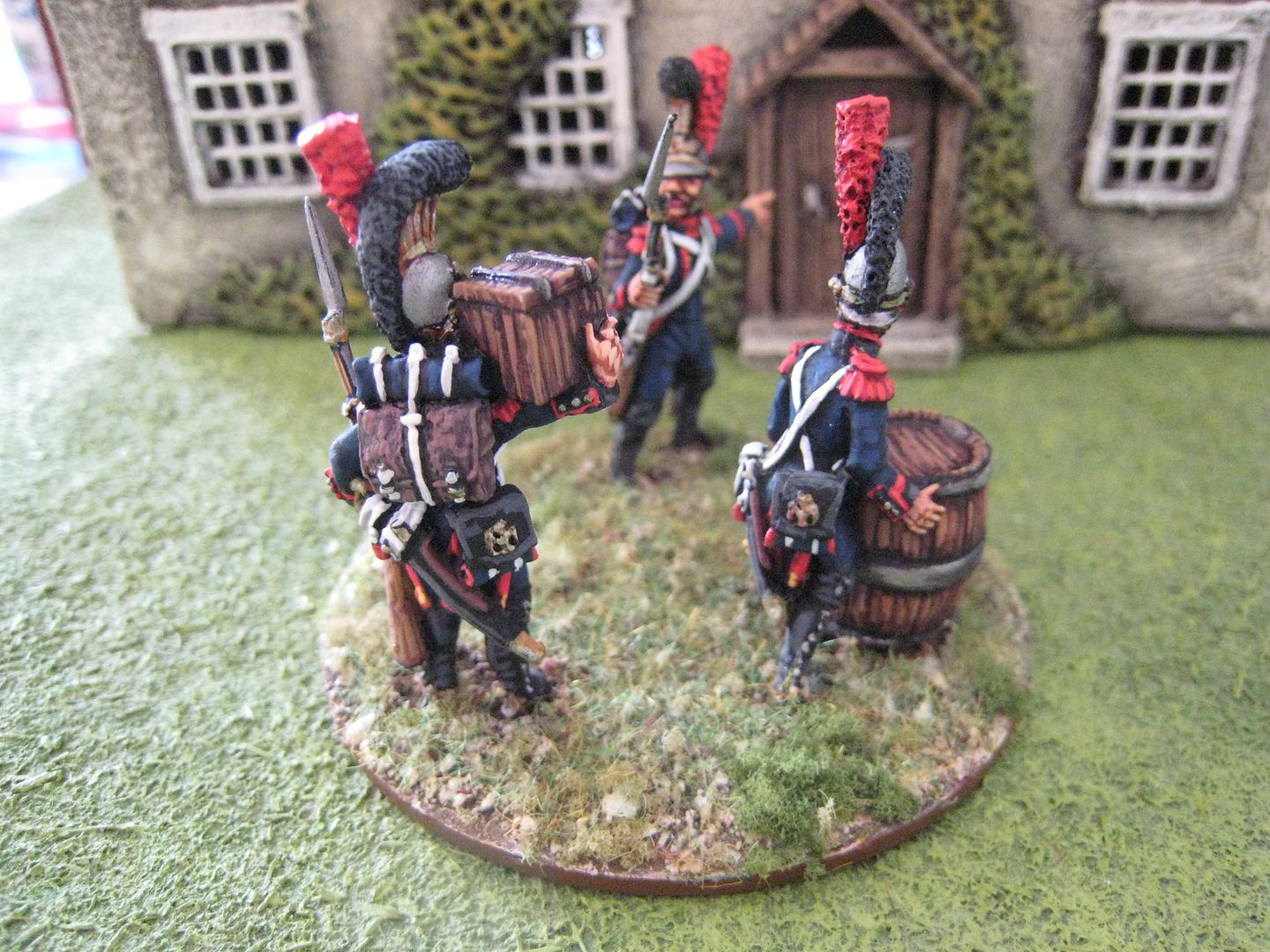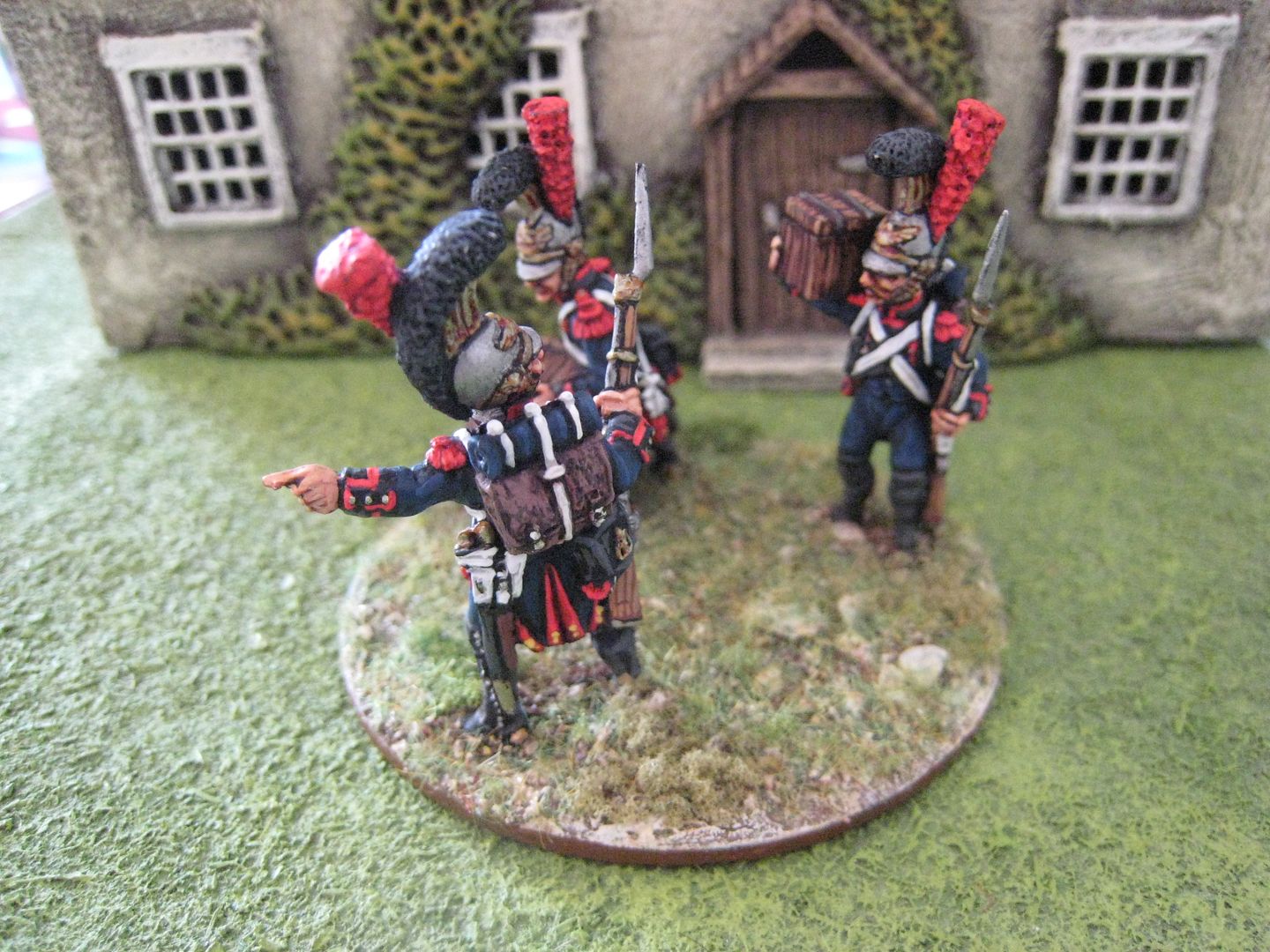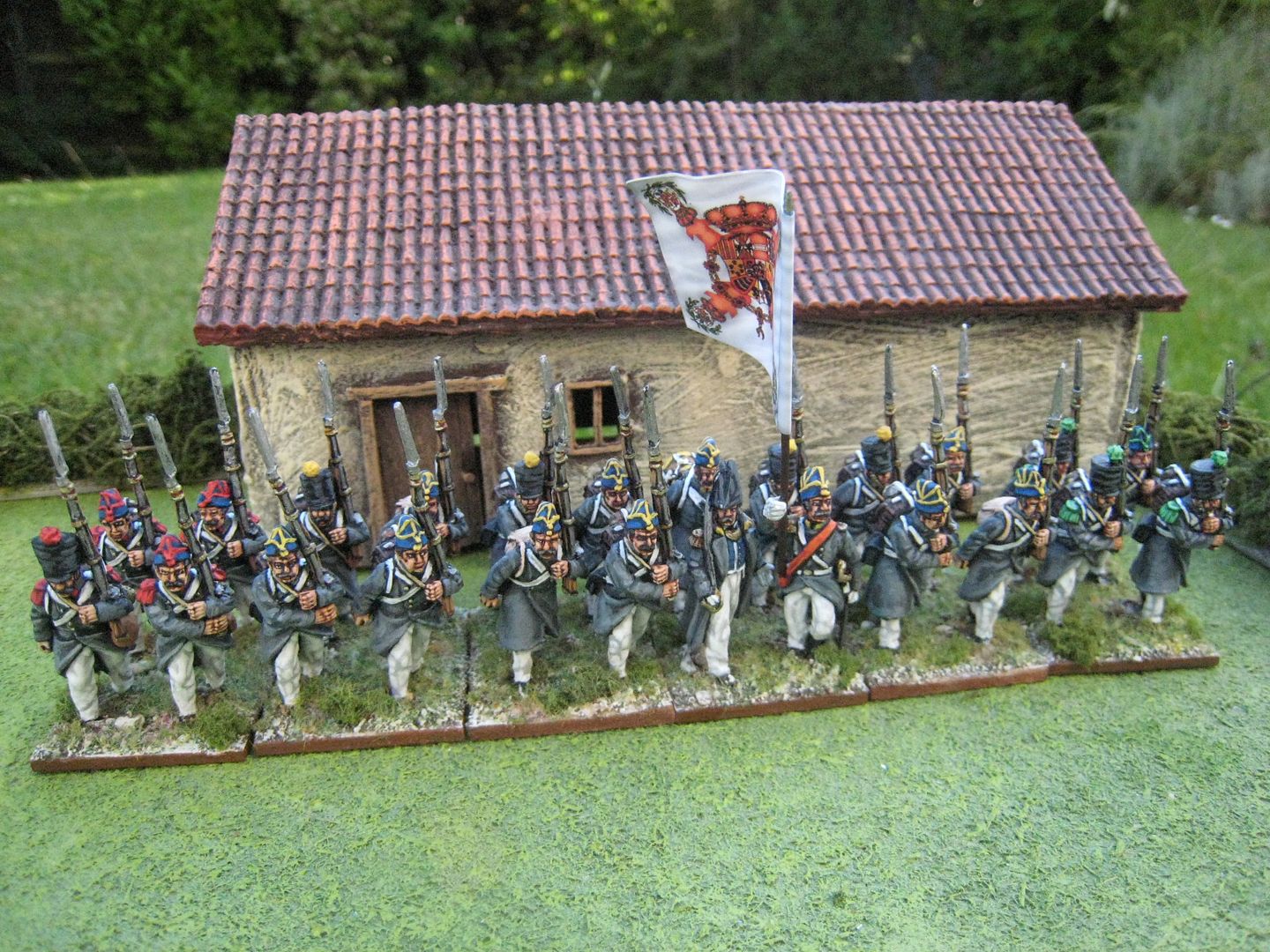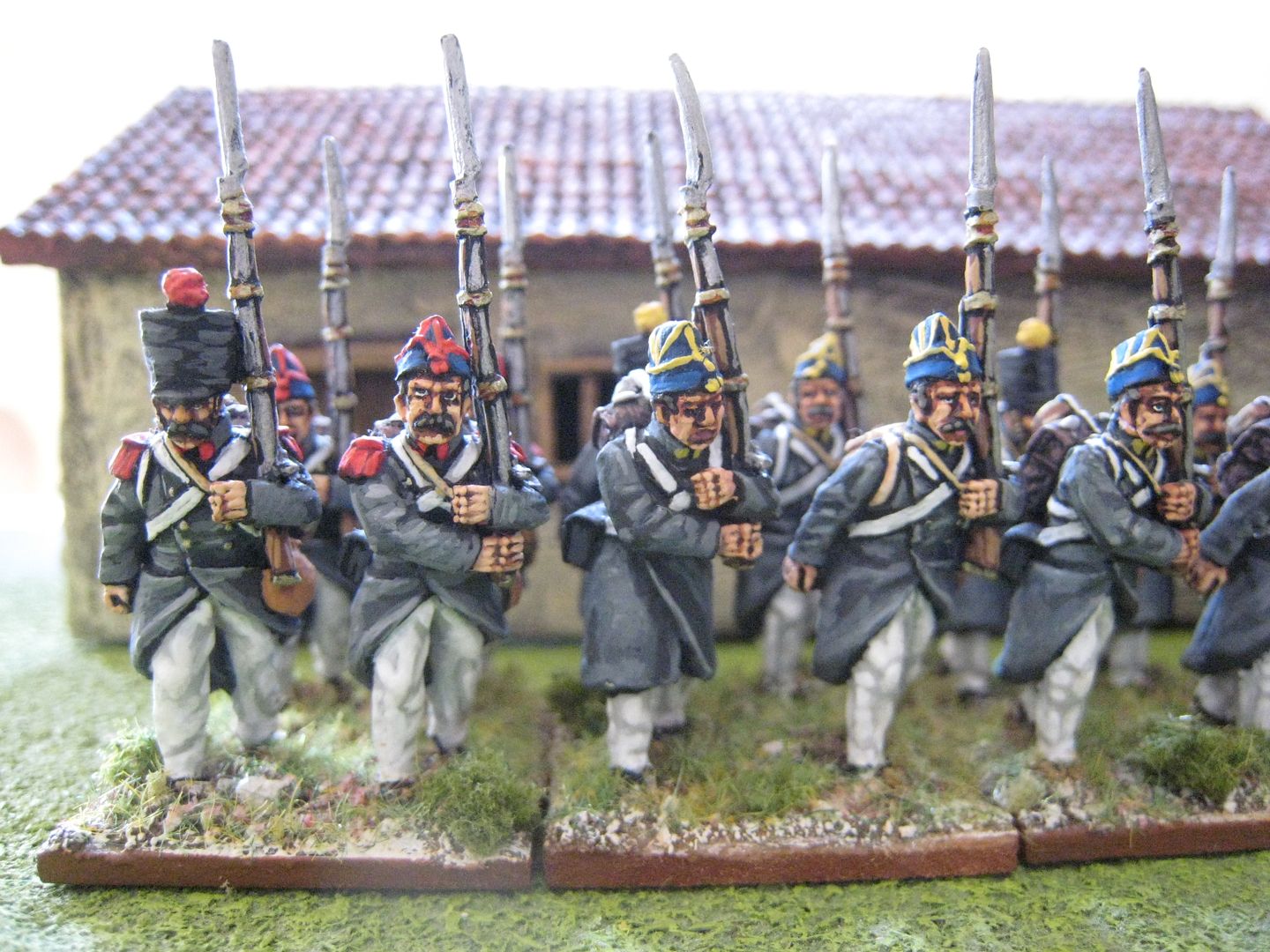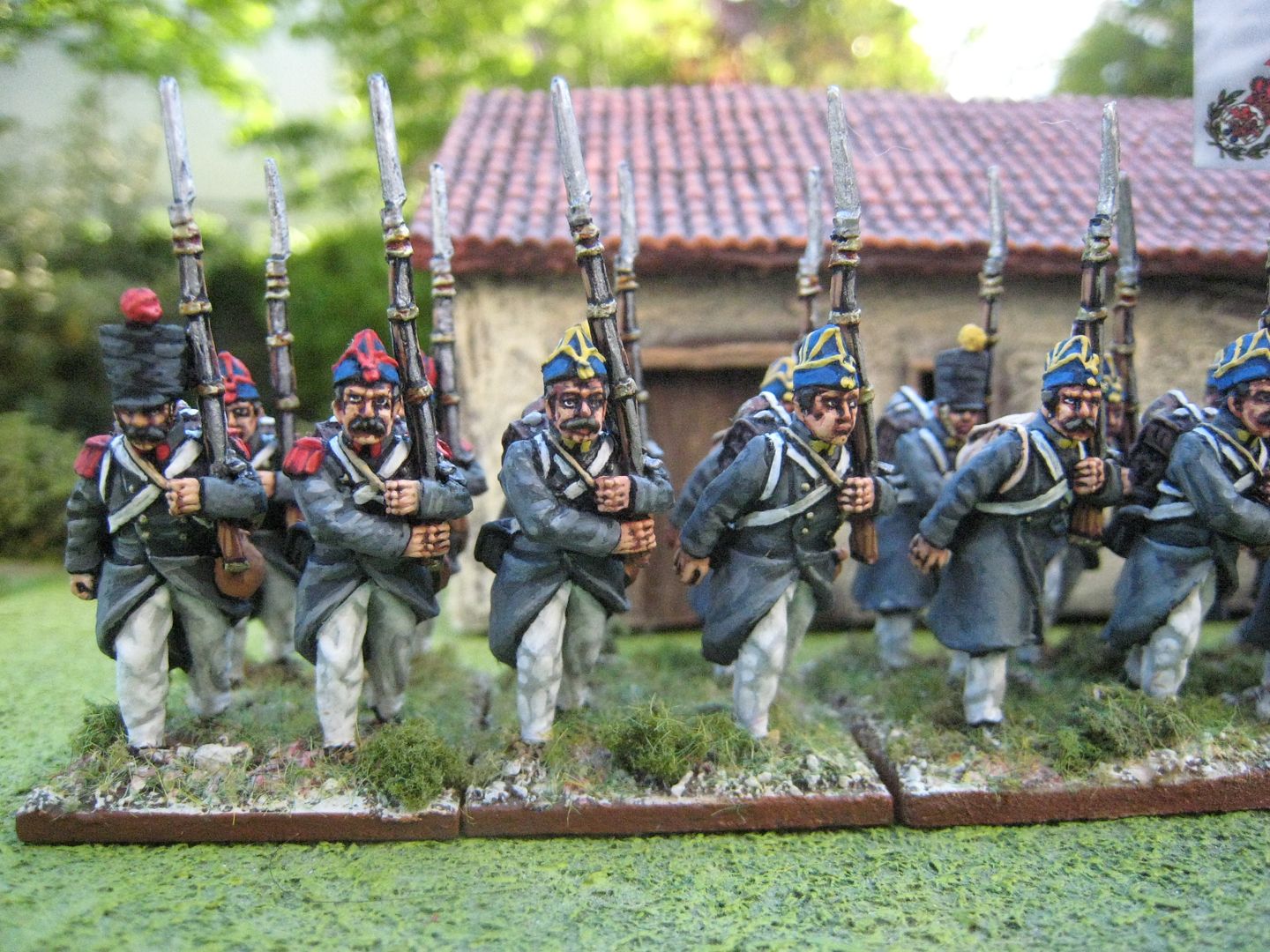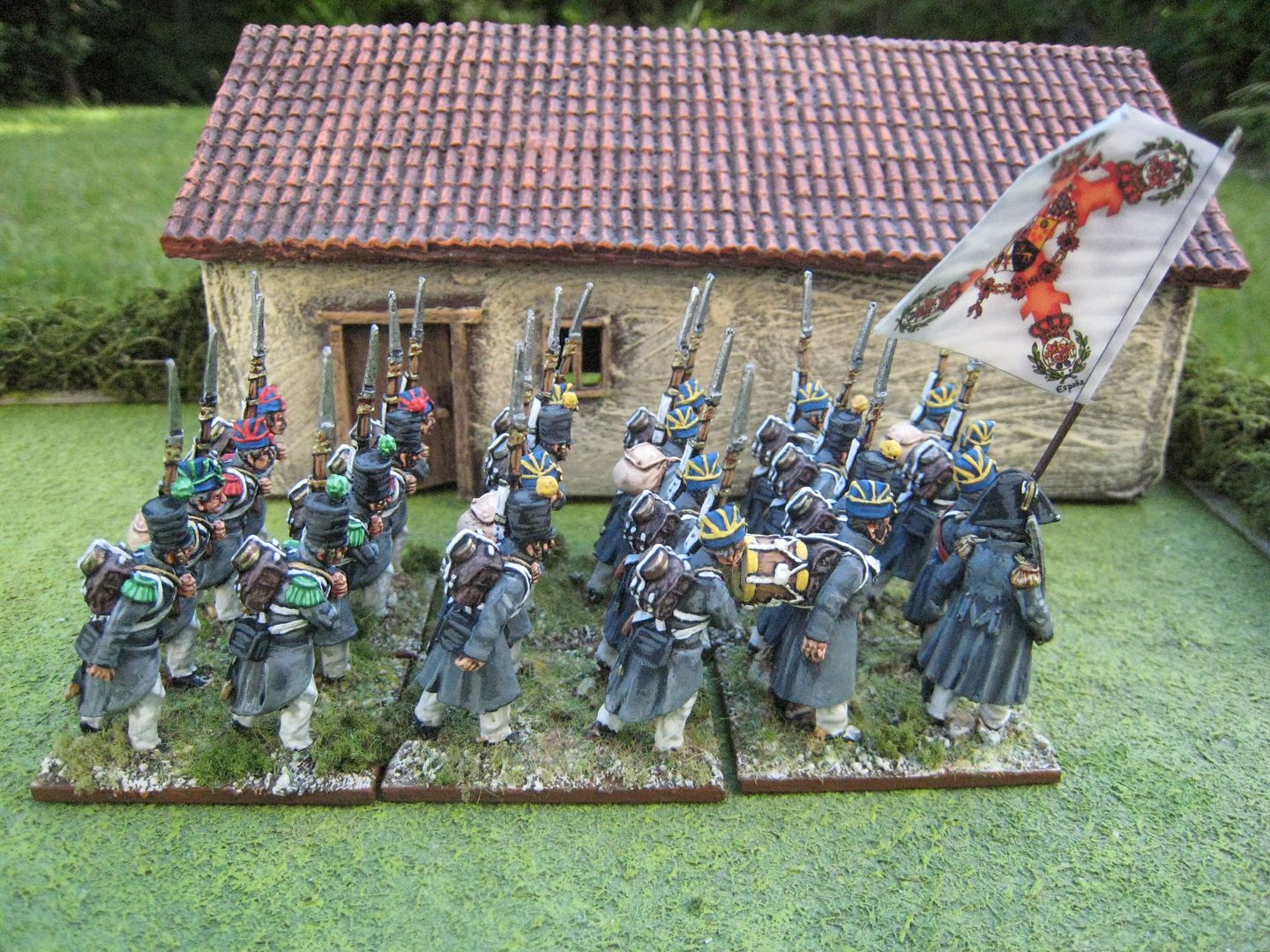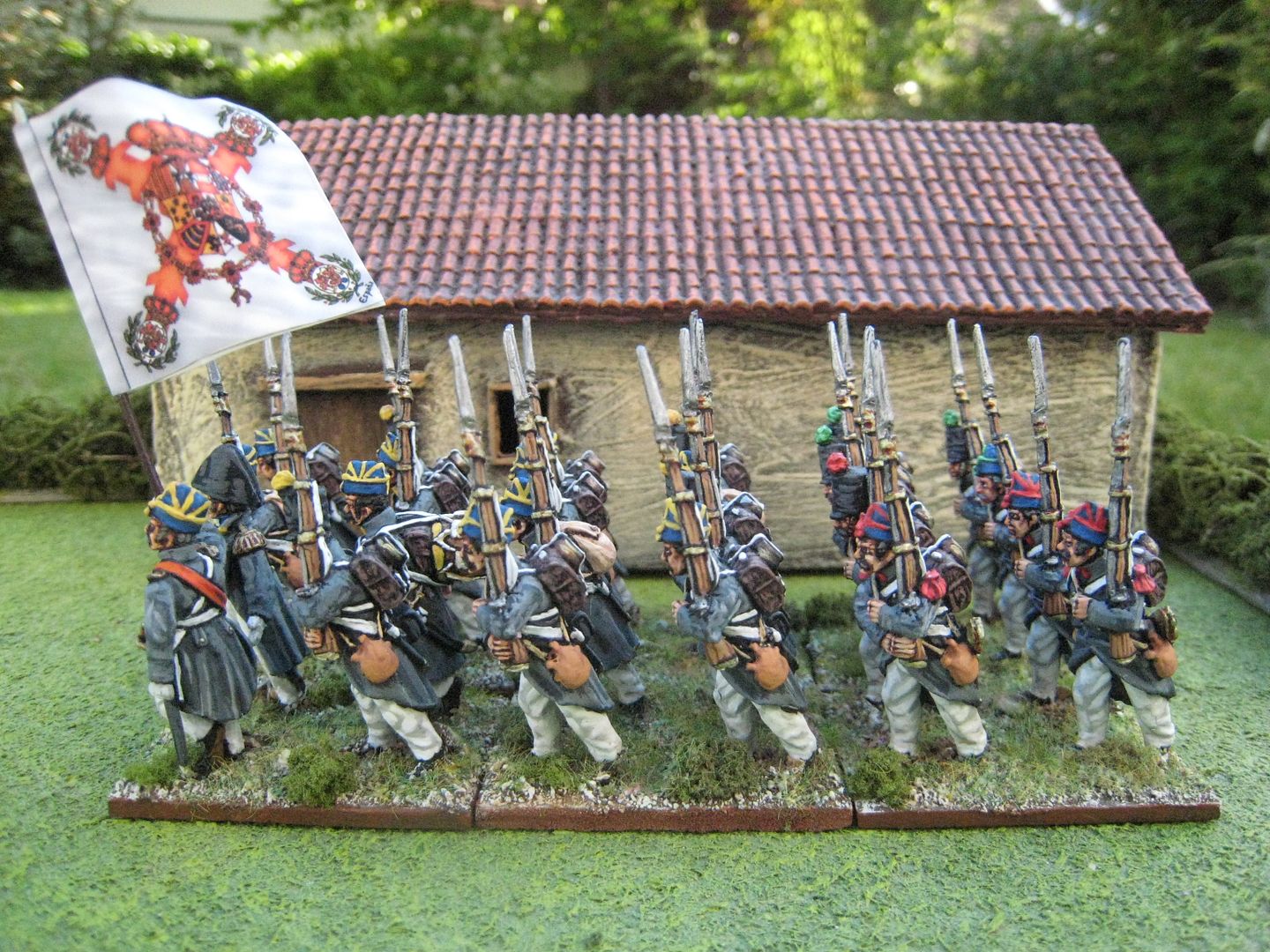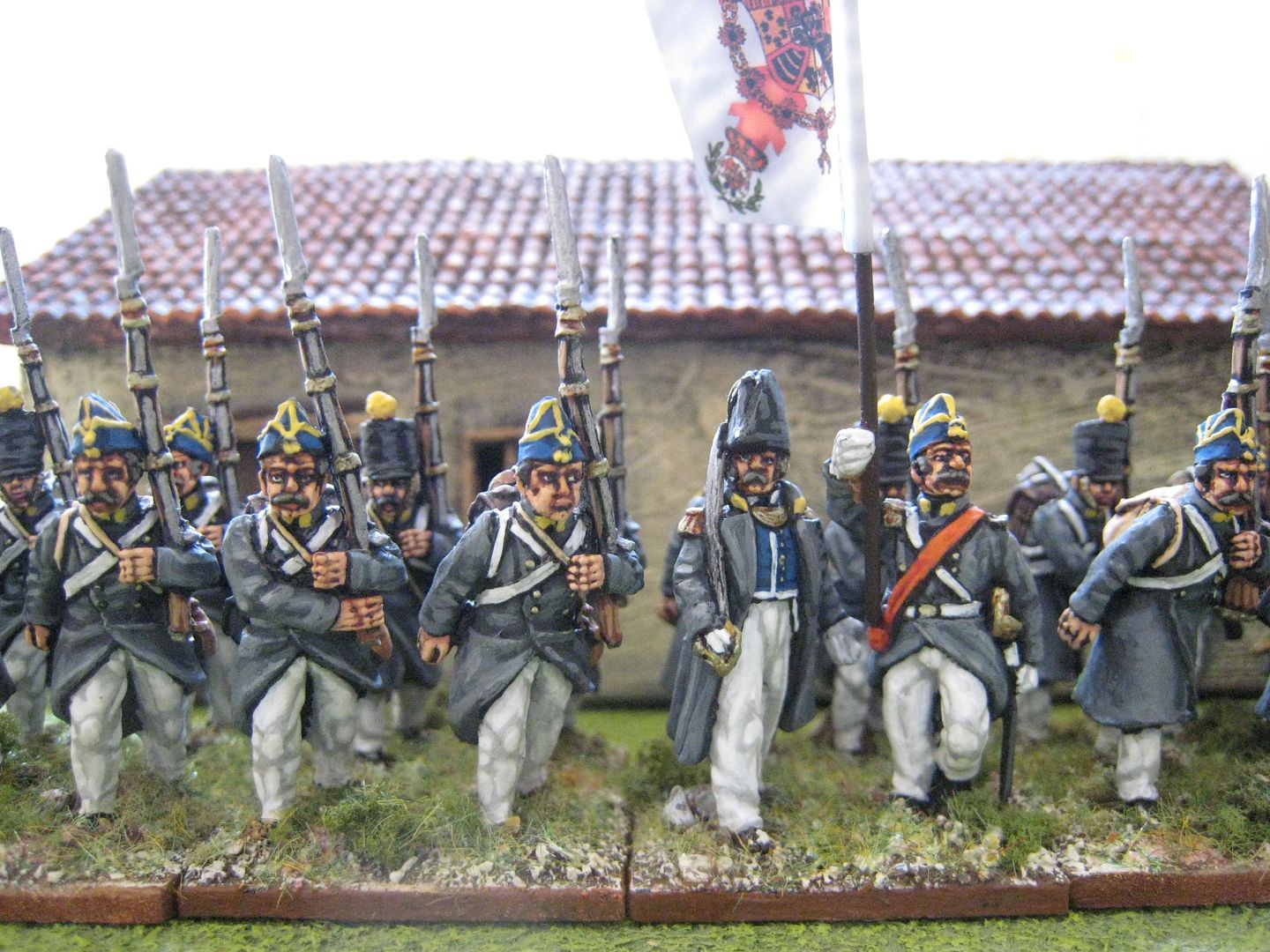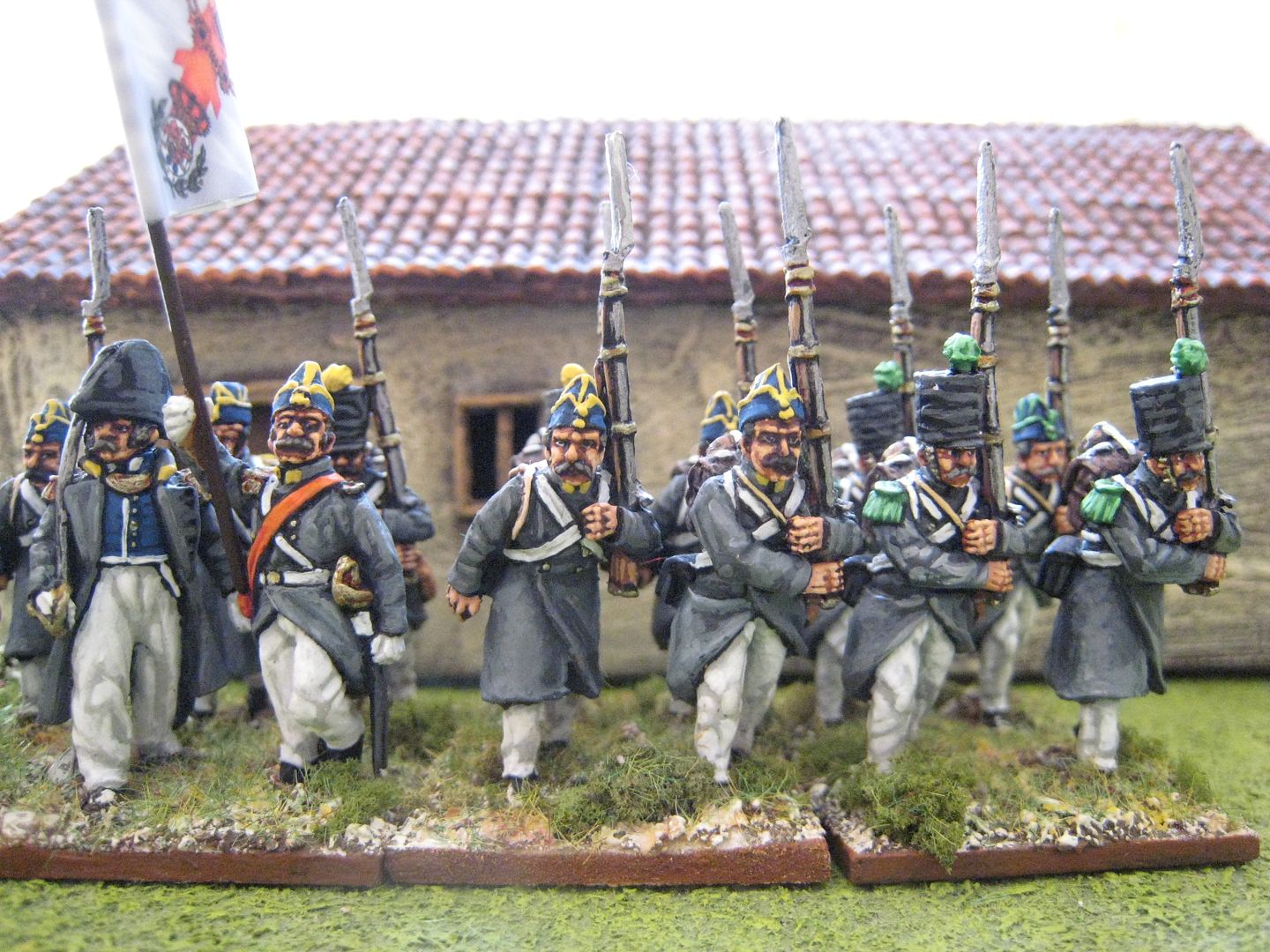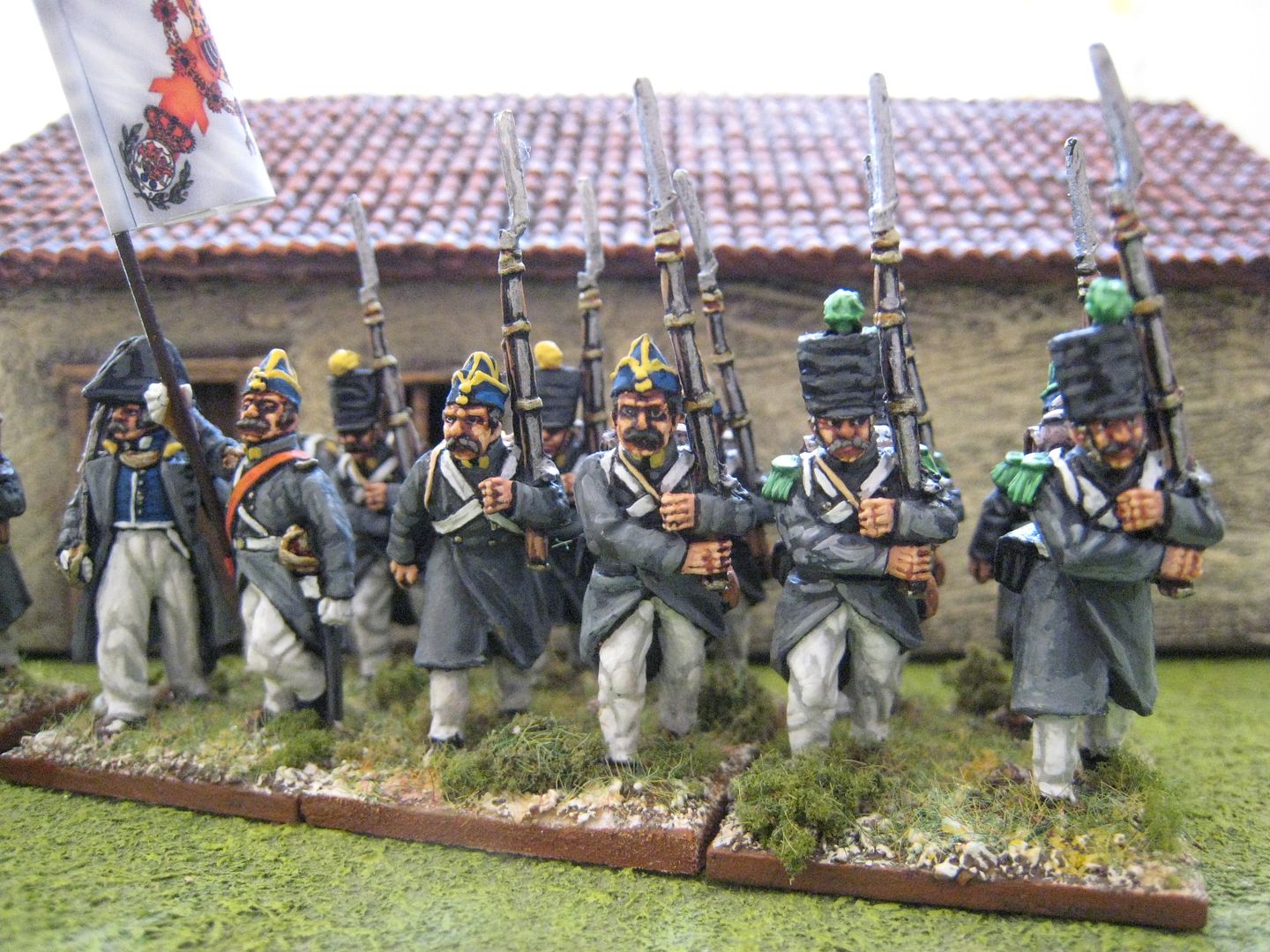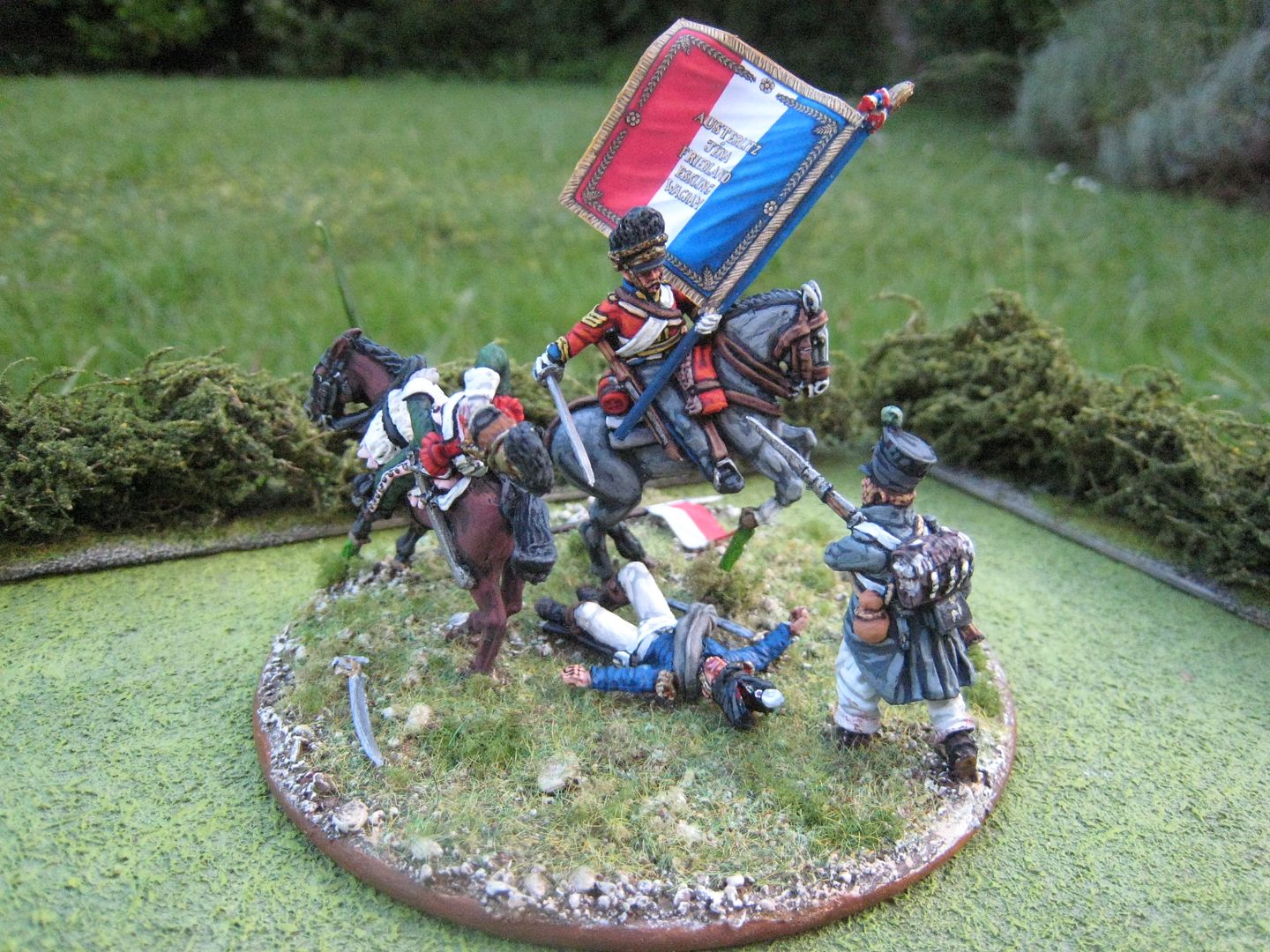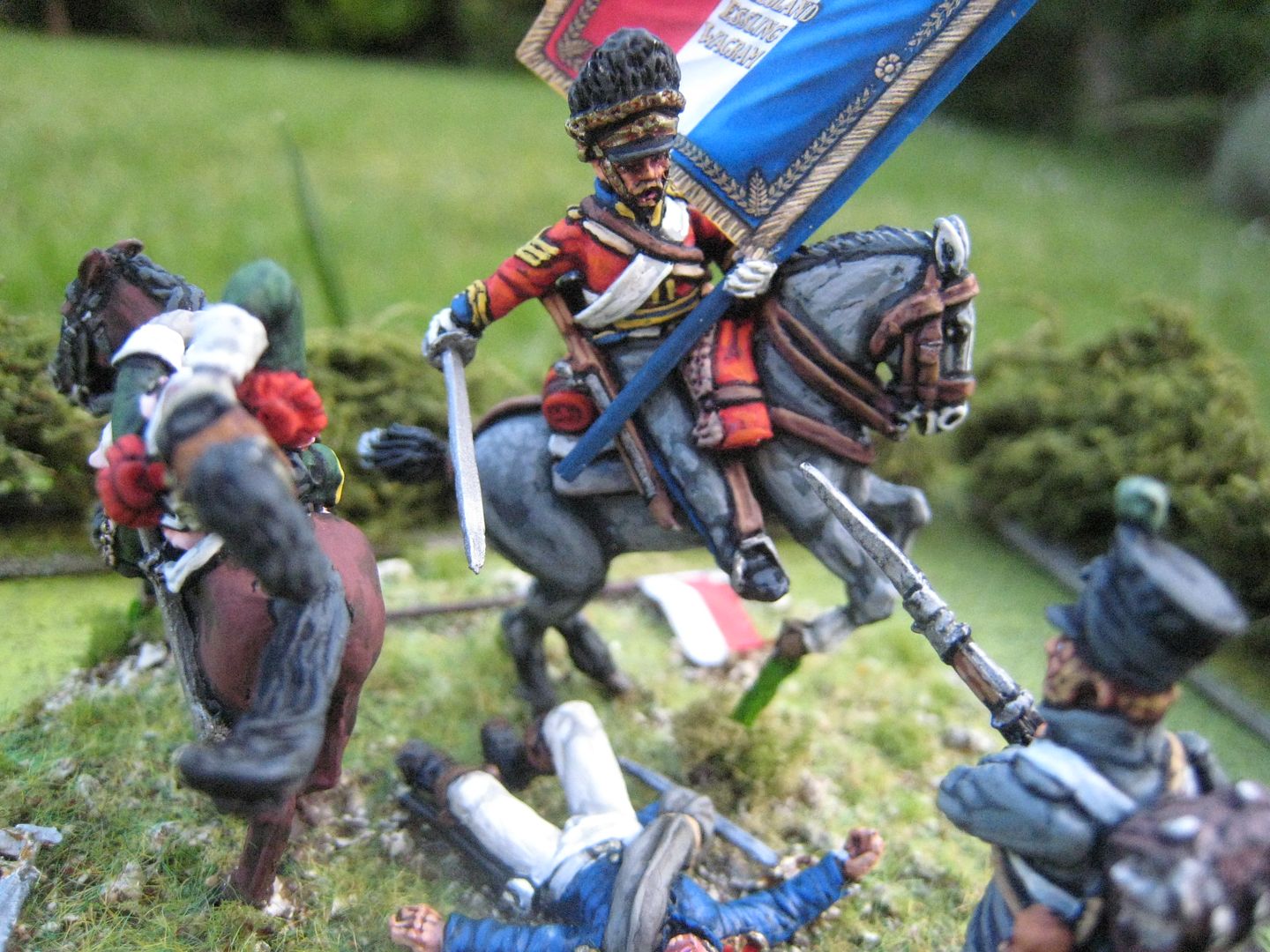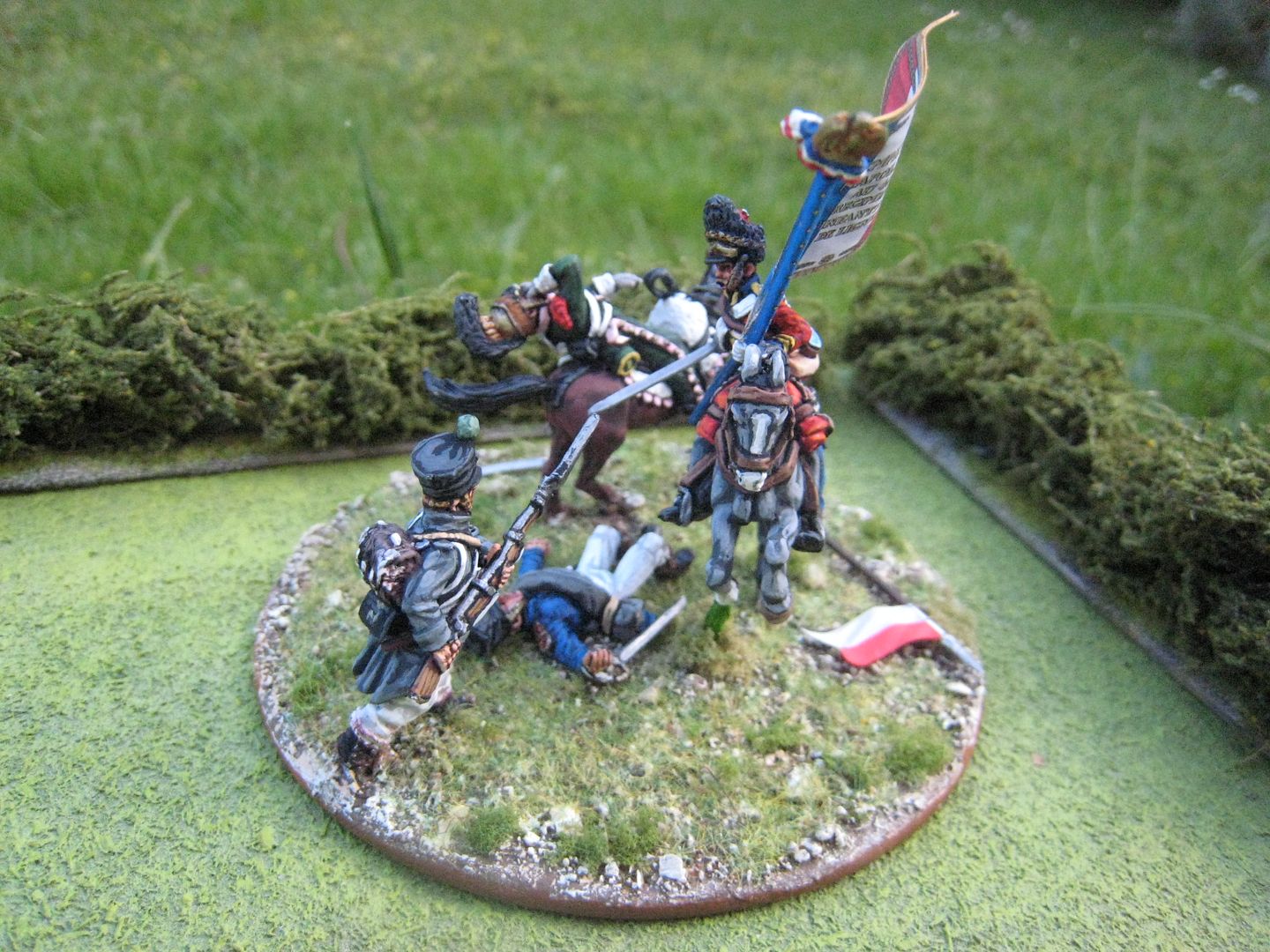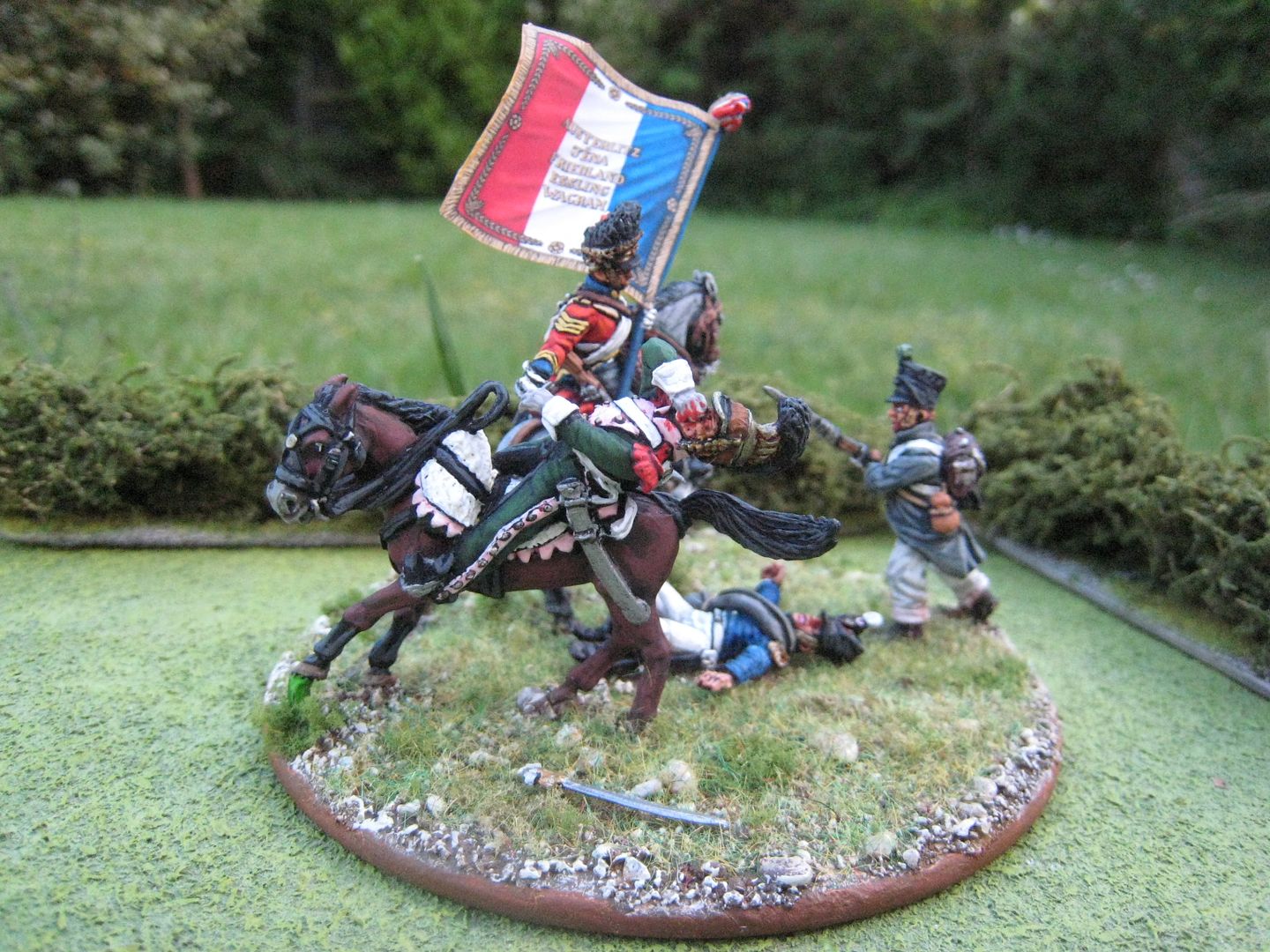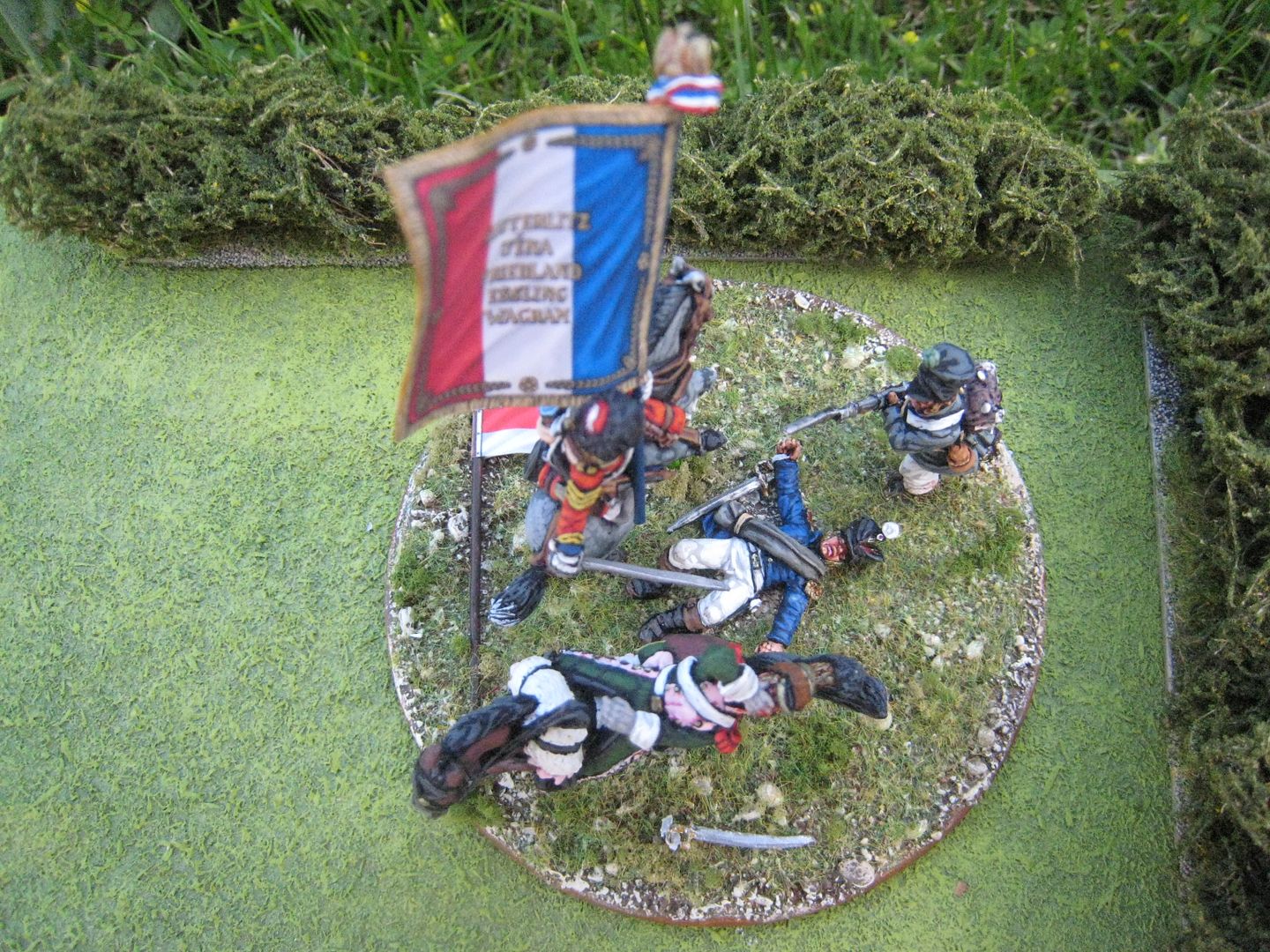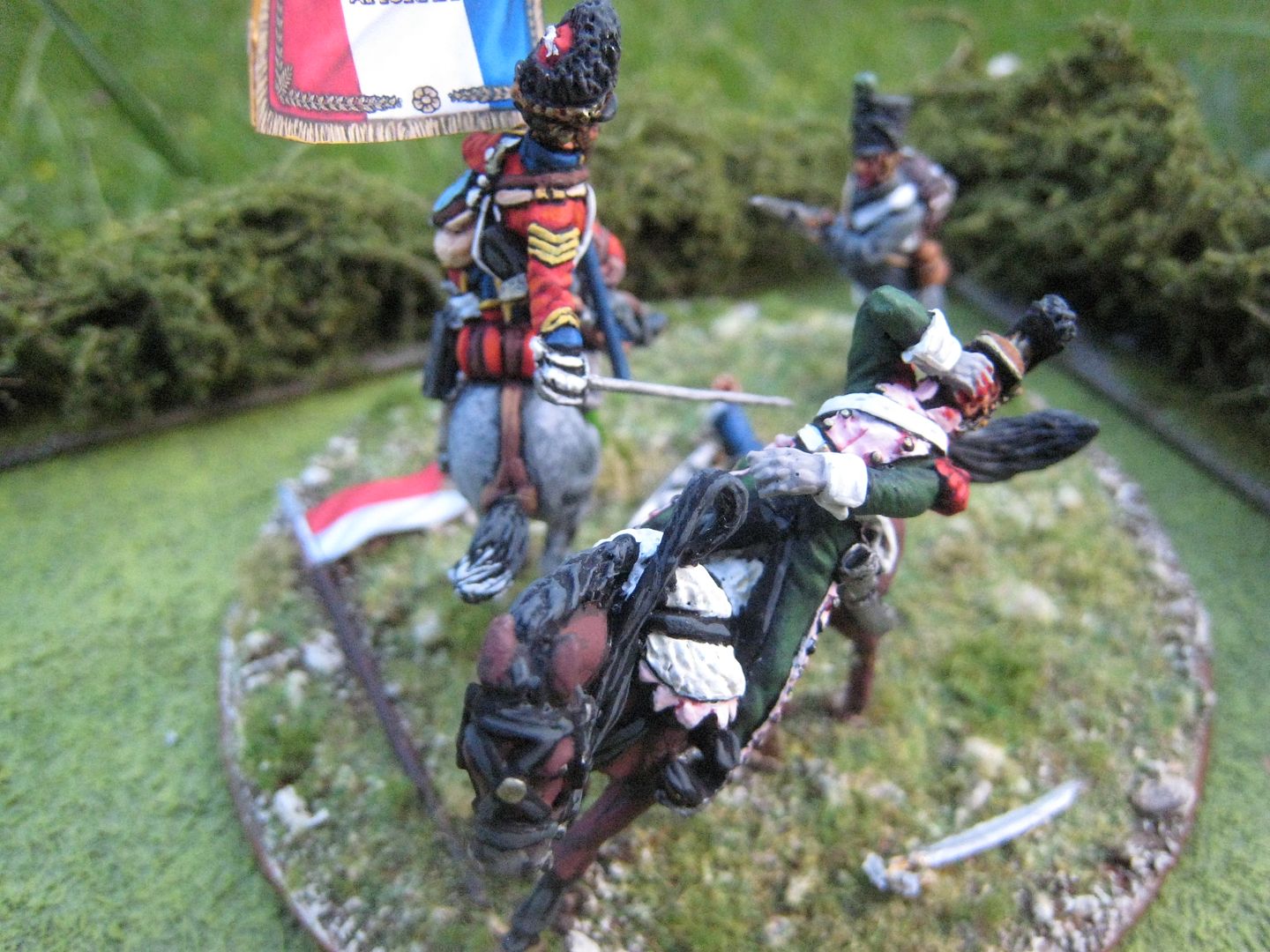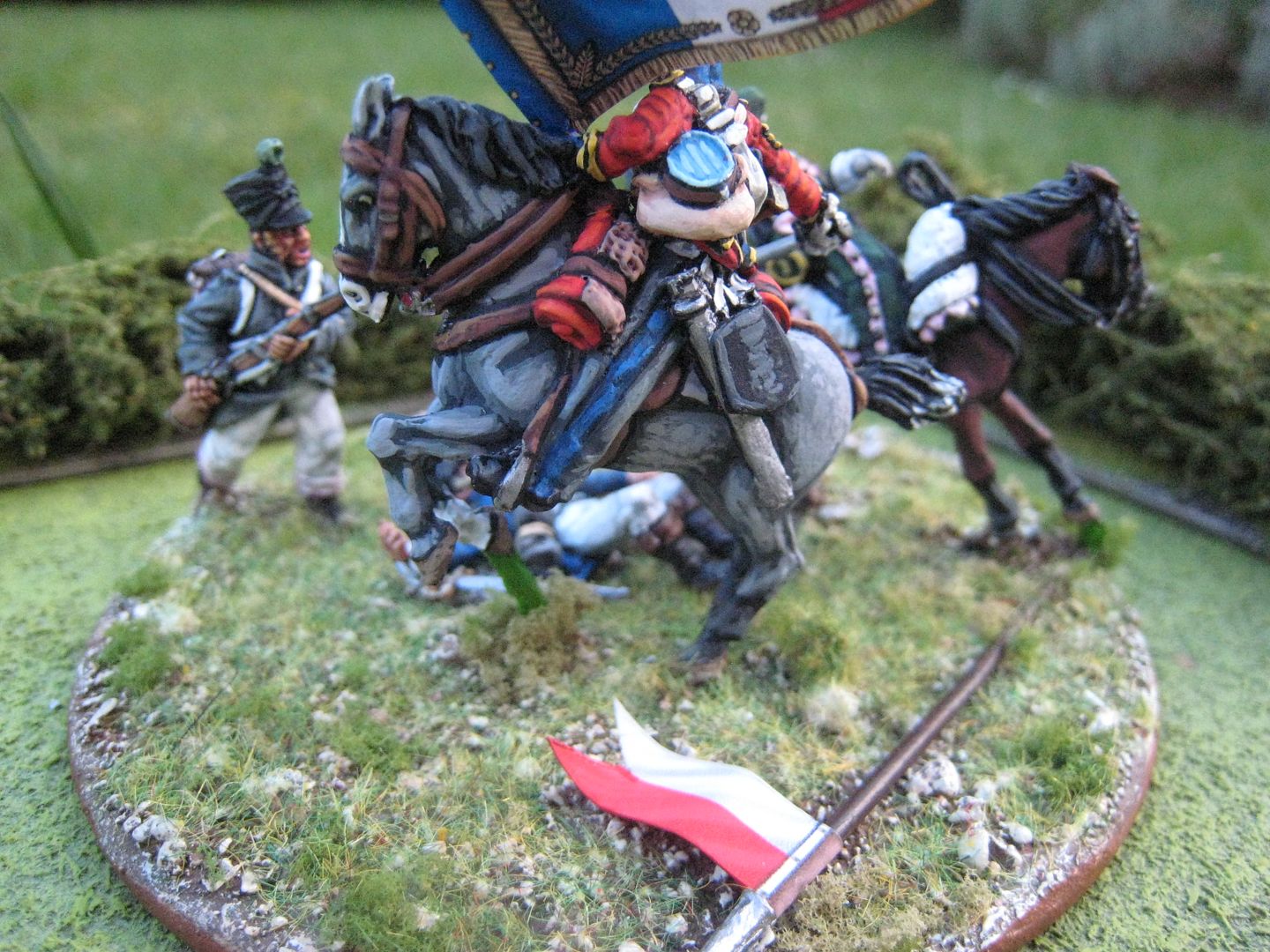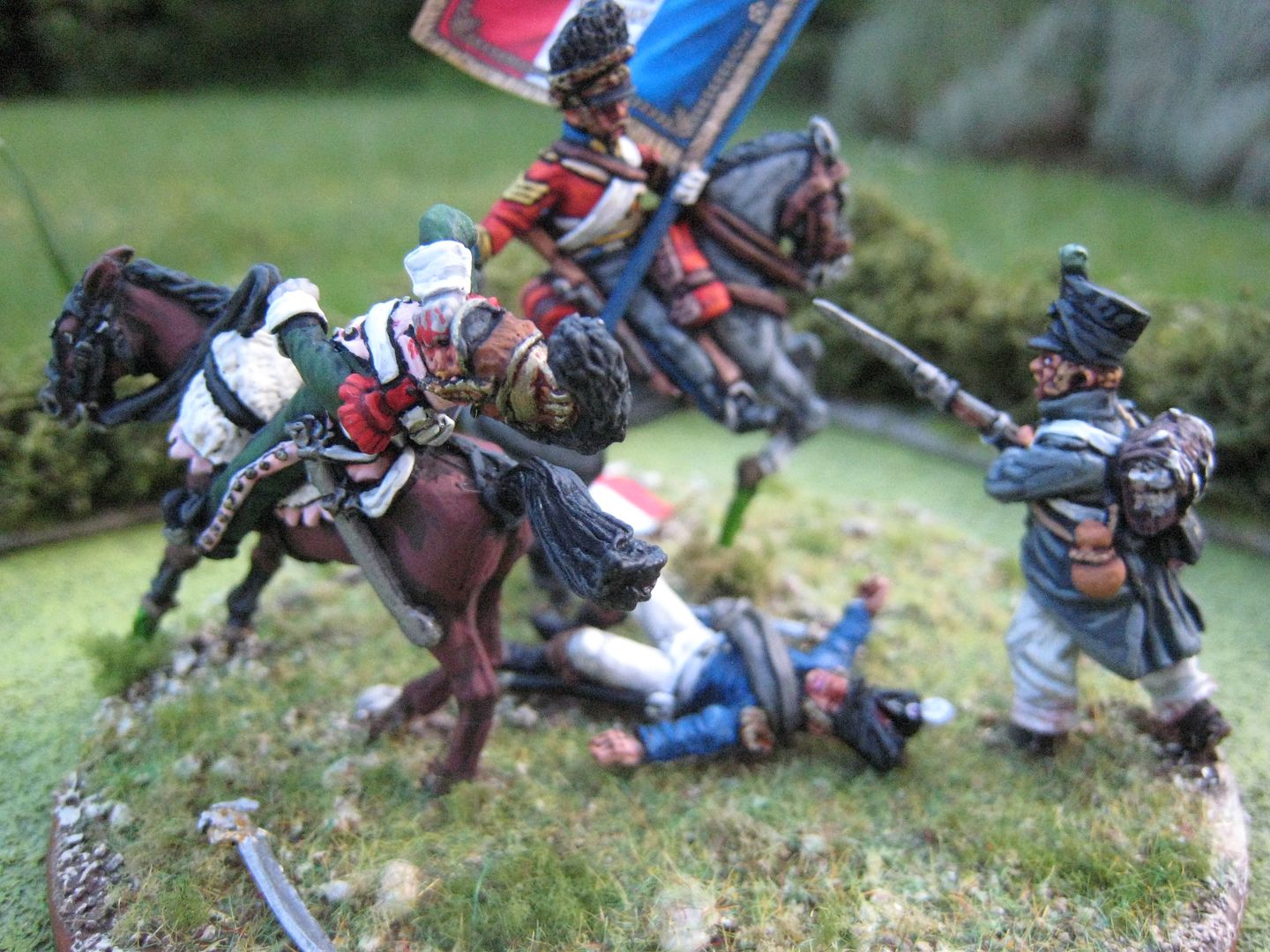These figures are from Gringos40, who have released a wide variety of figures in 28mm and 40mm. Their Napoleonic range has various esoteric Imperial Guard types: mamelukes, Gendarmes d'Elite, the Marins and engineers, and a couple of personalities. The engineers range has several poses, including skirmishing and marching figures and command. I thought the figures you see here would make a nice little vignette to represent the presence of the engineers, perhaps being drafted in to ferry ammunition and powder to the Imperial Guard's artillery. Whether these troops were actually present at the battle of Waterloo I don't know; I suppose they might have been off building or repairing a bridge somewhere. However, these are nice figures and it seems a pity not to find a use them. Gringos40 also do a sapeurs fire engine set which I must check out some time...
These are large 28mm figures. From base to the crest of the helmet is 35mm and they look quite big side by side with Perry and (particularly) Foundry Napoleonic figures. I thought about putting some more boxes and crates or barrels on the base, but then decided that would be too busy and, given the amount of "rear echelon" stuff I have for my French Waterloo army (with much more planned), I wanted to keep the base size of this vignette as small as possible. As with my other Imperial Guard figures (who now have a new label all to themselves) I used the Foundry "French Blue 65" palette with a cheeky final highlight of "Deep Blue 20B". More AWI next, I promise.
3 figures. Painted June 2015.
